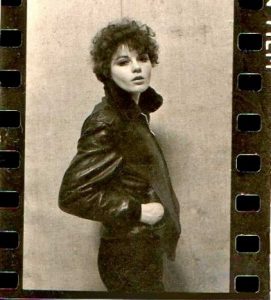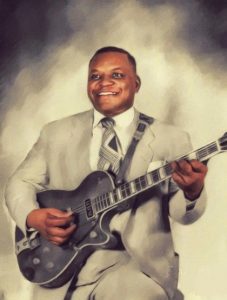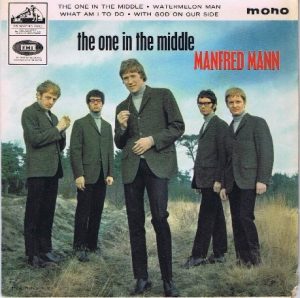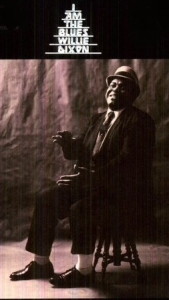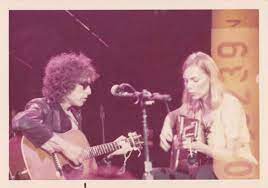by Jochen Markhorst
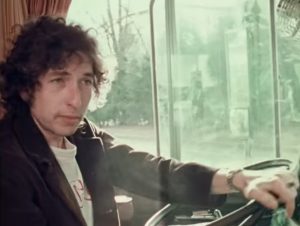 Dylan does not only get under the skin of David Gilmour and Syd Barrett. Drummer Nick Mason counts Dylan, just like Gilmour does in Desert Island Discs, among his all-time favourites, when Jools Holland asks him in 2020 to compile a Top 5 for a radio broadcast of Later… With Jools Holland. Mason calls Dylan “still the greatest songwriter in rock music history” and chooses The Freewheelin’ as number 1 in his Classic Albums Top 5. “There’s an abstraction to some of them,” Nick explains, “that means that you can interpret them in the way it means the most to you. I think that’s one of the great skills of great songwriting.” But equally remarkable he considers the fact that Dylan often gets behind the wheel of the tour bus himself.
Dylan does not only get under the skin of David Gilmour and Syd Barrett. Drummer Nick Mason counts Dylan, just like Gilmour does in Desert Island Discs, among his all-time favourites, when Jools Holland asks him in 2020 to compile a Top 5 for a radio broadcast of Later… With Jools Holland. Mason calls Dylan “still the greatest songwriter in rock music history” and chooses The Freewheelin’ as number 1 in his Classic Albums Top 5. “There’s an abstraction to some of them,” Nick explains, “that means that you can interpret them in the way it means the most to you. I think that’s one of the great skills of great songwriting.” But equally remarkable he considers the fact that Dylan often gets behind the wheel of the tour bus himself.
Mason: He does like touring and actually driving the bus.
Holland: So why does he do that, then?
Mason: Well, I never actually had the opportunity to ask him, but it’s not something that ever appealed to me.
Holland: Has he got a passenger service vehicle license?
Mason: I haven’t checked his credentials, I’m afraid. But it’s obviously something we should do, straight after the show.
More explicit and, as always, unambiguous about Dylan’s influence is Roger Waters. When he is the castaway in Desert Island Discs in May 2011, he still pays his respects in the well-known clichés (“Leonard Cohen and Bob Dylan were the two men who allowed us to believe that there was an open door between poetry and song lyrics”), but eight months later, in January 2012 in the radio studio of Howard Stern, he does not shy away from the Big Words, bordering on melodrama:
“Sad-Eyed Lady Of The Lowlands sort of changed my life. When I heard that, I thought, if Bob can do it, I can do it. It’s twenty minutes long. It’s a whole album. And in no way gets dull or boring, or anything. You just get more and more engrossed, it just gets more and more hypnotic, the longer it goes on.”
With which Waters quite specifically defines Dylan’s influence on Pink Floyd: the courage to deviate from three-minute songs, to let songs expand into whole album sides (okay, Sad-Eyed lasts a little over 11 minutes, not “twenty minutes”, but still a whole album side), and the encouragement to allow poetry into song lyrics.
Opinions differ as to the poetic qualities of Waters’ lyrics, but we can at least agree that the Pink Floyd catalogue contains a considerable number of exceptionally successful one-liners. There’s someone in my head but it’s not me (“Brain Damage”), “Careful with That Axe, Eugene”, “Set the Controls for the Heart of the Sun”, sometimes even with a Dylanesque quality: “So you think you can tell Heaven from Hell?” for instance (“Wish You Were Here”) or
You pick the place and I'll choose the time And I'll climb That hill in my own way. Just wait a while for the right day. And as I rise above the tree lines and the clouds I look down, hearing the sound of the things you've said today (“Fearless”, 1971)
Although the most Dylanesque verse was not written by Roger Waters, but by Rick Wright, for that heart-breakingly beautiful opening to “Summer of ’68”:
Would you like to say something before you leave Perhaps you'd care to state exactly how you feel We said goodbye before we said hello I hardly even like you, I shouldn't care at all We met just six hours ago, the music was too loud From your bed I gained a day and lost a bloody year
The one time we hear Pink Floyd in a Dylan song, it is – of course – not due to some Floydian poetry in the song lyrics. “Can’t Wait” is a beautiful song, and the lyrics are larded with shiny, Dylan-worthy one-liners, but in essence the lyrics are not that spectacular; a classic blues lament of a rather desperate man tangled up in a one-way love – the lady apparently finds him much less desirable than he does her. Large parts of the text are interchangeable. Literally; in the three officially released versions (on Time Out Of Mind and on Tell Tale Signs) and in the live versions, it’s a coming and going of verse lines, some moving to other songs (Well, my back is to the sun because the light is too intense moves eventually to “Sugar Baby”, for instance) and really only the opening (I can’t wait / Wait for you to change your mind) is fixed in all versions.
The tone does shift, though; in the final album version it is desperate and sombre, as illustrated by the closing words:
Well I'm strollin' through the lonely graveyard of my mind I left my life with you somewhere back there along the line I thought somehow that I would be spared this fate I don't know how much longer I can wait
…in other versions the tone is reproachful, such as:
Loneliness around me diggin’ at me like a ray What a piece of work she is to cause my heart to pray I thought somehow that I'd be spared this fate And I don't know how much longer I can wait.
That’s what Dylan sings in “Alternate version #2”, the second version that can be found on Tell Tale Signs. Which is also the version that for the sake of convenience is called the “psychedelic version”, but would even more deserve the nickname “the Pink Floyd version” – on account of the arrangement, obviously. And there we have it – the one time Pink Floyd shines through in a Dylan song.
From the first bar, it is unmistakable: “Us And Them”. Same organ sound, half a tone higher, identical, mesmerizing larghissimo tempo. Drums and hypnotic bass as subdued and tasteful as in “Shine On You Crazy Diamond” and “Breathe”. And the guitar parts adapt almost automatically to the Floyd mode; sharp, guiding accents like in “Echoes” and “Money”, and as a bonus a slide guitar with the unsurpassed elegance as Gilmour plays in classics like “Breathe”, “Us And Them” and especially “The Great Gig In The Sky”. Incomparable, at any rate, with the mosaic parts Lanois puzzles together on the album version and the Dr. John/New Orleans voodoo vibe he puts underneath. Or with the Chicago/Albert King’s “Stormy Monday” colouring of “Alternate version #1” on Tell Tale Signs.
The same goes for the many, many arrangements Dylan chooses in the many, many live performances of “Can’t Wait”. I’m looking for anything that will bring a happy glow, as Dylan sings. Colours and sounds from every corner of the canon, but never again does Dylan switch back to the engrossing, hypnotic (in Roger Waters’ words) cadence and colouring of that one time Pink Floyd penetrated a Dylan song.
A pity, perhaps. But comparing the restless shuffling with accents, verse fragments and arrangements is a fascinating consolation. What Tony Attwood demonstrates in his article exploring the arrangements of the live versions.Tony does have the credentials to do so, by the way. A song arrangement exploration license, so to speak.
Jochen is a regular reviewer of Dylan’s work on Untold. His books, in English, Dutch and German, are available via Amazon both in paperback and on Kindle:
- Blood on the Tracks: Dylan’s Masterpiece in Blue
- Blonde On Blonde: Bob Dylan’s mercurial masterpiece
- Where Are You Tonight? Bob Dylan’s hushed-up classic from 1978
- Desolation Row: Bob Dylan’s poetic letter from 1965
- Basement Tapes: Bob Dylan’s Summer of 1967
- Mississippi: Bob Dylan’s midlife masterpiece
- Bob Dylan’s Greatest Hits
- John Wesley Harding: Bob Dylan meets Kafka in Nashville
- Tombstone Blues b/w Jet Pilot: Dylan’s lookin’ for the fuse
- Street-Legal: Bob Dylan’s unpolished gem from 1978

